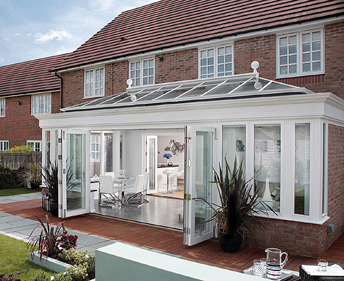Orangeries, similar to conservatories but built more solidly with timber or brick, let you enjoy the view of your garden year-long and increase precious living space.
Currently, there is a wide array to choose from. The DIY varieties are customizable to the size you need and the style you want; the perfect complement to an existing home.
There are many options to choose from as well between aluminum, wood or uPVC - with the latter being low maintenance and very versatile.
For most people though, the primary concern is that it blends in with the rest of the architecture and doesn't just jut out like an afterthought. It also has to be sturdy and virtually maintenance-free. Space and value won't count if it leaks or is a theft magnet.
In the past, Orangeries were used to grow orange trees, shrubs and flowers. Like a greenhouse, it was set apart from the house. These days the orangery is attached to the house and needs its own ventilation system and heating system.
Before you choose an Orangery…
It looks so simple when you see it on perfect magazine spreads but orangeries are rather complex so be prepared for a little more than rolling up your sleeves. Orangeries are pretty much like conservatories – but offer more privacy and are built more solidly. A well-planned orangery can look stunning without breaking the bank. The key points to consider when choosing what type to build are:
- Style
- Design
- Budget
- Layout
- Size and
- Intended function.
Latest technologies for an Orangery
Present-day Orangeries have all the charm of older structures but offer a whole lot more. The latest technologies are geared toward making your structure sturdy and safe. Some tips for a stylish, comfortable and burglar-proof orangery:
- If you can afford it, get a solar roof which reduces heat, glare and UV rays passing through the roof.
- Use key lockable handles and other safety measures for doors and windows.
- Make forced entry a difficult affair and install alarms. Consider a multipoint locking system.
- Use toughened glass with internal glazing.
- Although UPVC frames look sturdy, reinforce it further with steel for added strength. They may not look as good as wooden or metal framing but they are cheaper and if cost is an issue then going vinyl is a good option.
- Choose flooring that will be versatile enough should you have a change of heart in the future. Some great choices are concrete embossed with large leaves, laminate, natural stone, tiled flooring and wood.
Orangeries can be designed along traditional or clean, modern lines. The great thing is, even if you are a construction newbie, you can benefit from using standardised, quality-assured materials that are less expensive than their older counterparts.








